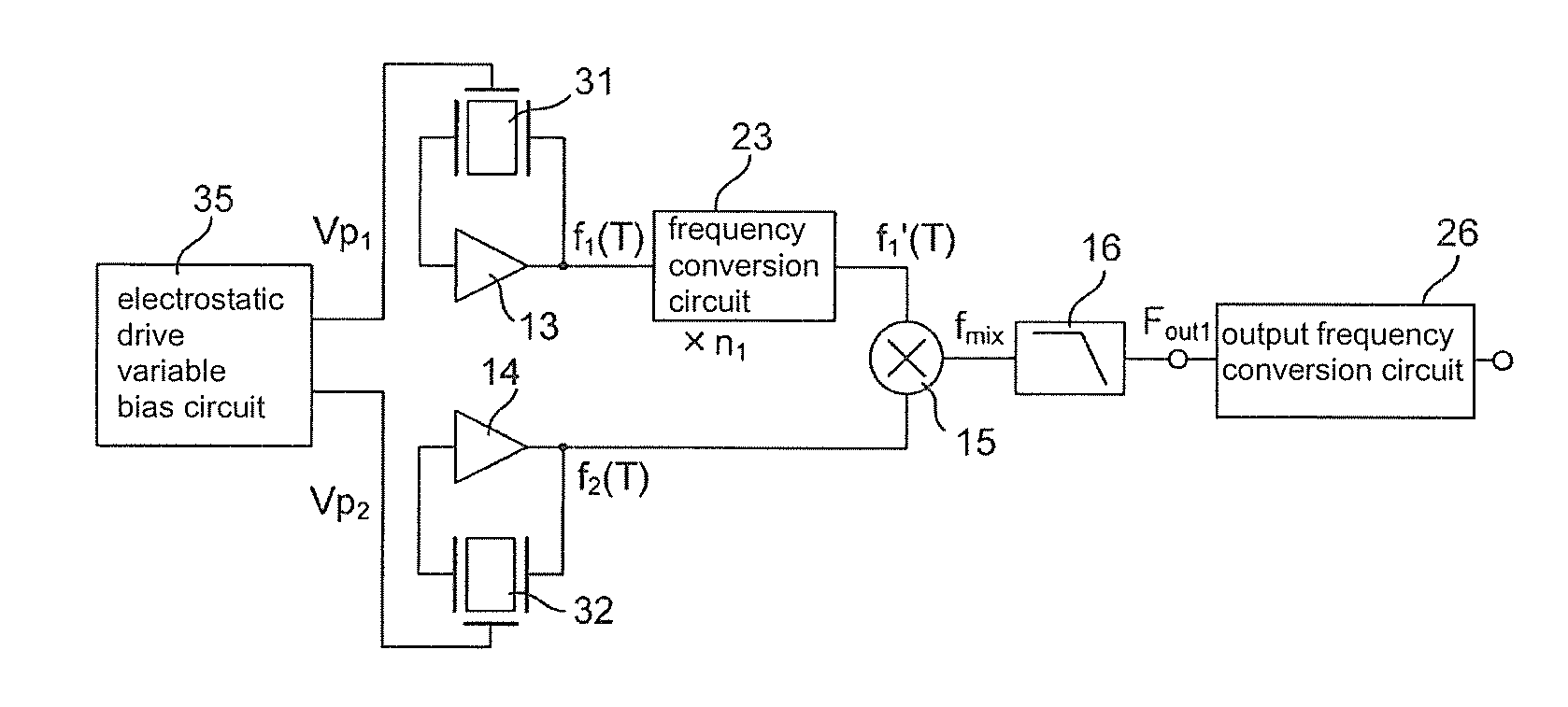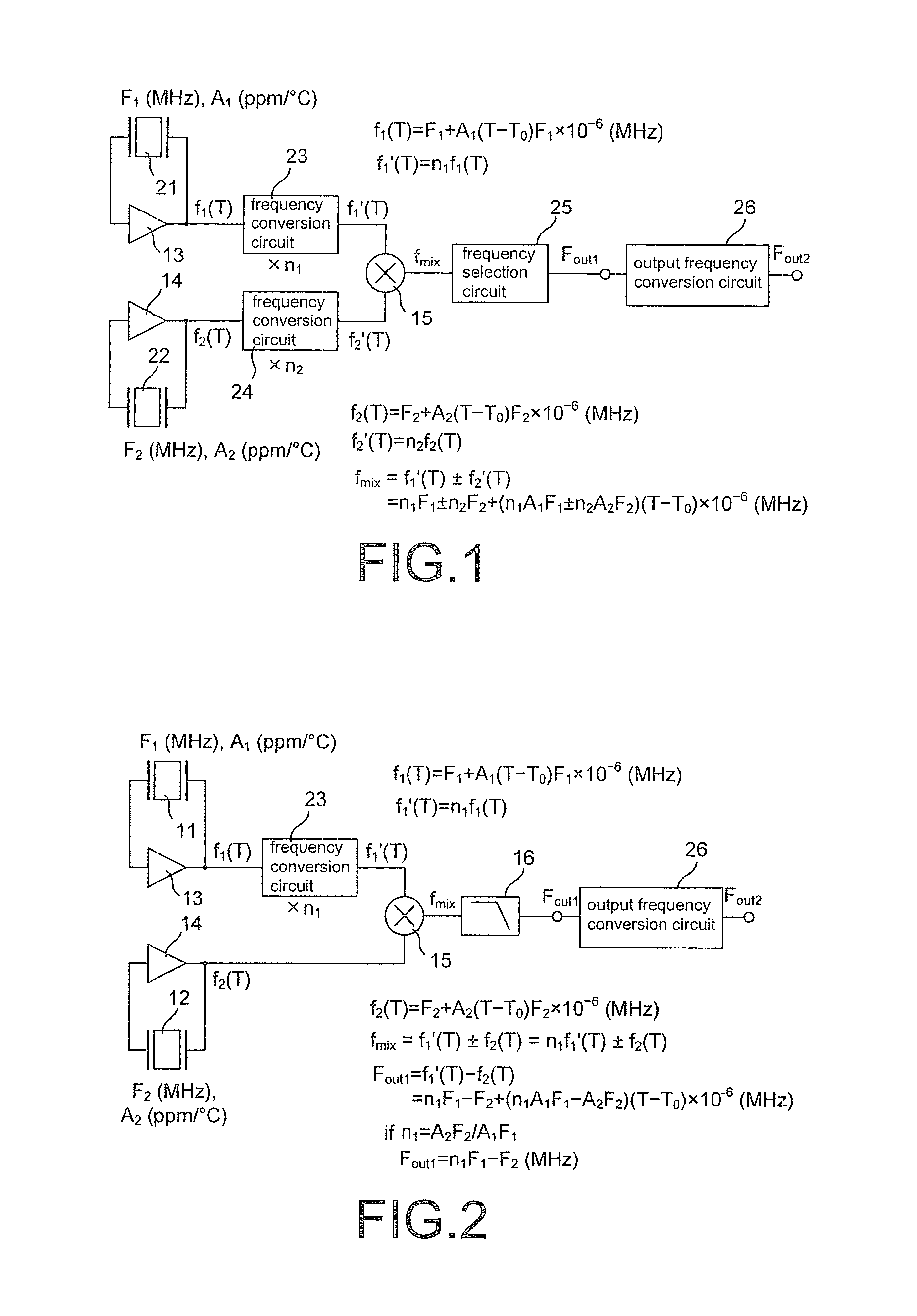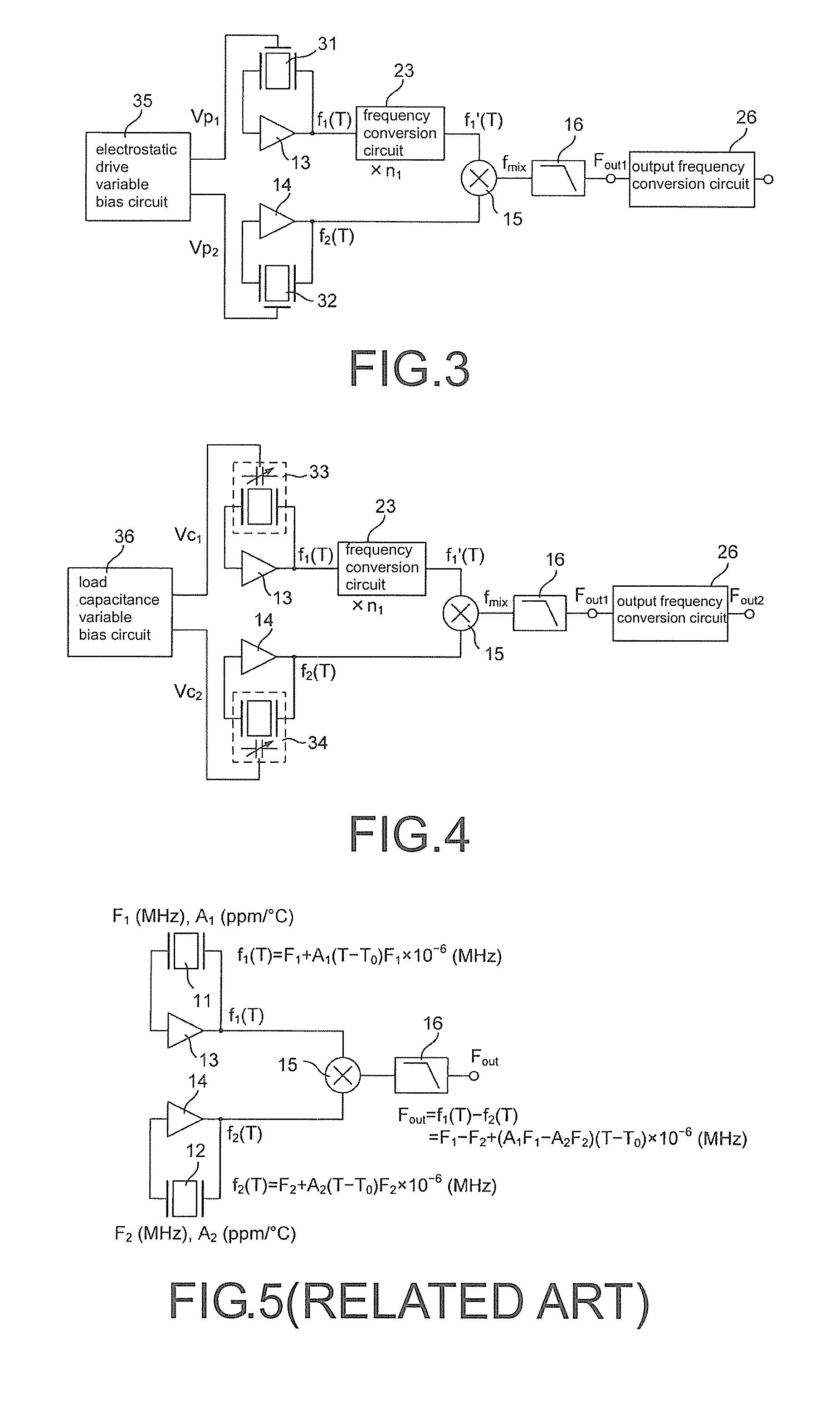Temperature compensation type oscillator
- Summary
- Abstract
- Description
- Claims
- Application Information
AI Technical Summary
Benefits of technology
Problems solved by technology
Method used
Image
Examples
Embodiment Construction
[0020]The preferred embodiments of the disclosure will be described with referring to the drawings.
[0021]A temperature compensation type oscillator illustrated in FIG. 1 is a principle configuration of an oscillator according to the disclosure.
[0022]The oscillator includes two crystal resonators 21 and 22. The following is assumed here. Resonance frequencies of the crystal resonators 21 and 22 at a reference temperature T0 (for example, 25° C.) are F1 and F2 (MHz), respectively. The crystal resonators 21 and 22 have temperature coefficients of A1 and A2 (ppm / ° C.), respectively. Here, let it be assumed that F1 / F2≠|A2 / A1|.
[0023]The crystal resonator 21 is interposed between an input and an output of an amplifier circuit 13 for oscillation. The amplifier circuit 13 vibrates the crystal resonator 21 as a resonance element to output an oscillation signal. The resonance frequency of the crystal resonator 21 has a temperature dependence expressed using a temperature coefficient A1. Hence,...
PUM
 Login to View More
Login to View More Abstract
Description
Claims
Application Information
 Login to View More
Login to View More - R&D
- Intellectual Property
- Life Sciences
- Materials
- Tech Scout
- Unparalleled Data Quality
- Higher Quality Content
- 60% Fewer Hallucinations
Browse by: Latest US Patents, China's latest patents, Technical Efficacy Thesaurus, Application Domain, Technology Topic, Popular Technical Reports.
© 2025 PatSnap. All rights reserved.Legal|Privacy policy|Modern Slavery Act Transparency Statement|Sitemap|About US| Contact US: help@patsnap.com



